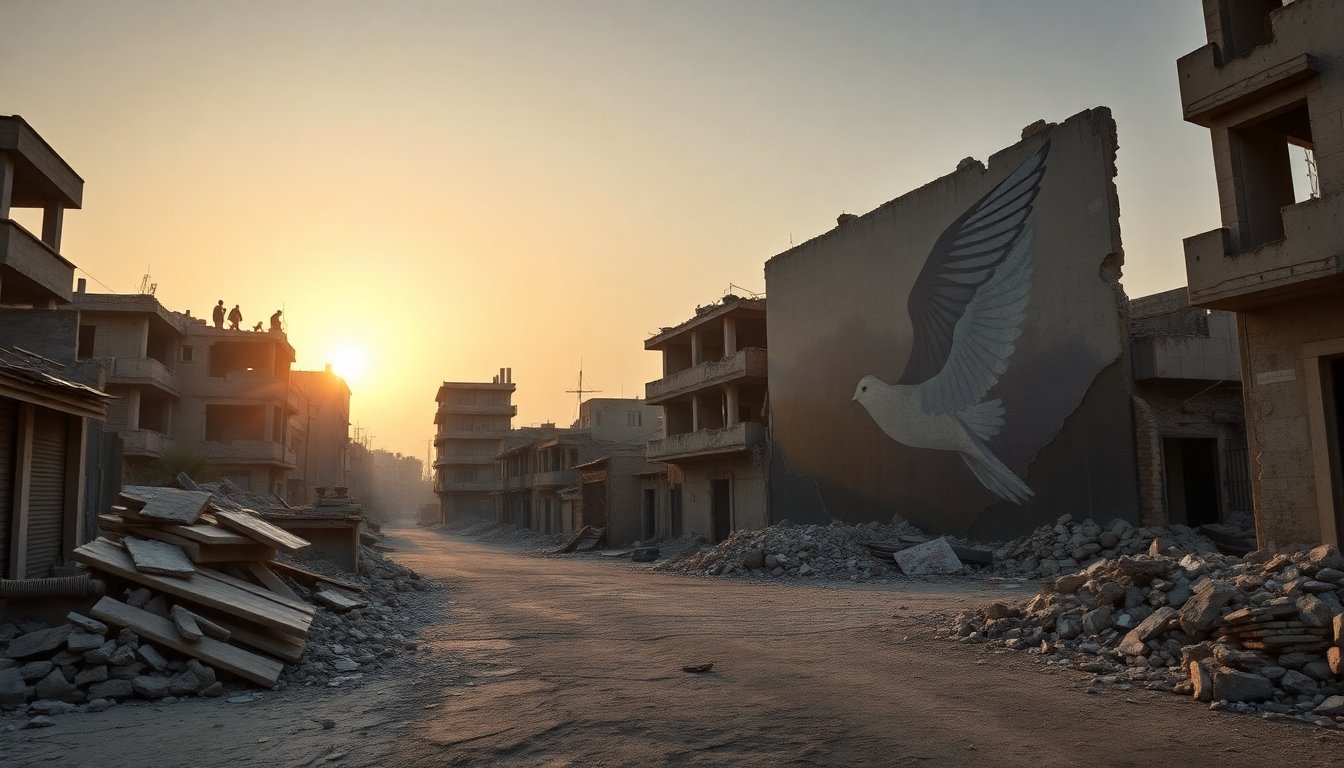Table of Contents
The announcement of Donald Trump’s 20-point peace initiative regarding the ongoing situation in Gaza has sparked significant debate. Trump’s assertion that this plan could usher in an era of eternal peace in the Middle East is met with skepticism, primarily due to the historical challenges surrounding previous ceasefire agreements.
One major hurdle in earlier negotiations has centered around the critical post-conflict structure of Gaza. The uncertainty surrounding the aftermath of any potential ceasefire remains contentious, particularly regarding the fate of the territory once the militant group Hamas releases the Israeli hostages it controls.
Historical context of ceasefire agreements
The ceasefire that occurred earlier this year serves as a stark reminder of the complexities involved. Lasting less than six weeks, this agreement collapsed when Israeli Prime Minister Benjamin Netanyahu opted not to advance beyond the initial terms. This plan envisioned a complete withdrawal of Israeli forces from Gaza, paving the way for a comprehensive rebuilding initiative.
During the discussions, critical elements remained ambiguous, such as the specifics of the withdrawal locations for Israeli troops, oversight for Gaza’s reconstruction, and necessary security arrangements. These unresolved questions were instrumental in the failure of the ceasefire.
Trump’s 20-point proposal: what’s different?
In contrast to previous plans, Trump’s recent proposal introduces a level of specificity that was previously lacking. As the appointed chair of a new Board of Peace, Trump will be joined by prominent figures, including former British Prime Minister Tony Blair, in overseeing the initiative. The proposal suggests that Palestinian representatives will participate at a “technocratic level,” managing essential public services.
Notably absent from this framework is any mention of involvement from United Nations agencies, such as the UN Relief and Works Agency, which historically played a crucial role in providing educational and social services in Gaza.
The disarmament dilemma
A significant condition of Trump’s plan is the complete disarmament of Hamas and other militant factions, with the stipulation that their members cannot participate in Gaza’s future governance. However, Israel has indicated that those members who renounce violence may remain within the territory. This demand for disarmament has been a longstanding point of contention, as Hamas has expressed distrust towards Netanyahu’s intentions, citing previous instances where agreements were not honored.
Netanyahu’s recent remarks at the UN emphasized his commitment to continuing military action against Hamas, stating that Israel “must finish the job” in Gaza. This rhetoric further complicates the prospect of a lasting peace.
Regional dynamics and future implications
The involvement of international leaders like Trump and Blair in the transitional governance board, alongside a potential military stabilization force from neighboring Arab nations, is likely intended to reassure Hamas regarding the enforceability of the agreement. Nonetheless, the viability of this arrangement remains questionable.
Historically, Israel has faced accusations of breaching ceasefire conditions, as evidenced by a U.S.-brokered agreement with Lebanon that was marred by ongoing hostilities. Observers note that Israel’s anticipated strategy for Gaza mirrors that of Lebanon, where military presence continues despite formal agreements.
Questions about governance
One major hurdle in earlier negotiations has centered around the critical post-conflict structure of Gaza. The uncertainty surrounding the aftermath of any potential ceasefire remains contentious, particularly regarding the fate of the territory once the militant group Hamas releases the Israeli hostages it controls.0
One major hurdle in earlier negotiations has centered around the critical post-conflict structure of Gaza. The uncertainty surrounding the aftermath of any potential ceasefire remains contentious, particularly regarding the fate of the territory once the militant group Hamas releases the Israeli hostages it controls.1
One major hurdle in earlier negotiations has centered around the critical post-conflict structure of Gaza. The uncertainty surrounding the aftermath of any potential ceasefire remains contentious, particularly regarding the fate of the territory once the militant group Hamas releases the Israeli hostages it controls.2
One major hurdle in earlier negotiations has centered around the critical post-conflict structure of Gaza. The uncertainty surrounding the aftermath of any potential ceasefire remains contentious, particularly regarding the fate of the territory once the militant group Hamas releases the Israeli hostages it controls.3
One major hurdle in earlier negotiations has centered around the critical post-conflict structure of Gaza. The uncertainty surrounding the aftermath of any potential ceasefire remains contentious, particularly regarding the fate of the territory once the militant group Hamas releases the Israeli hostages it controls.4


